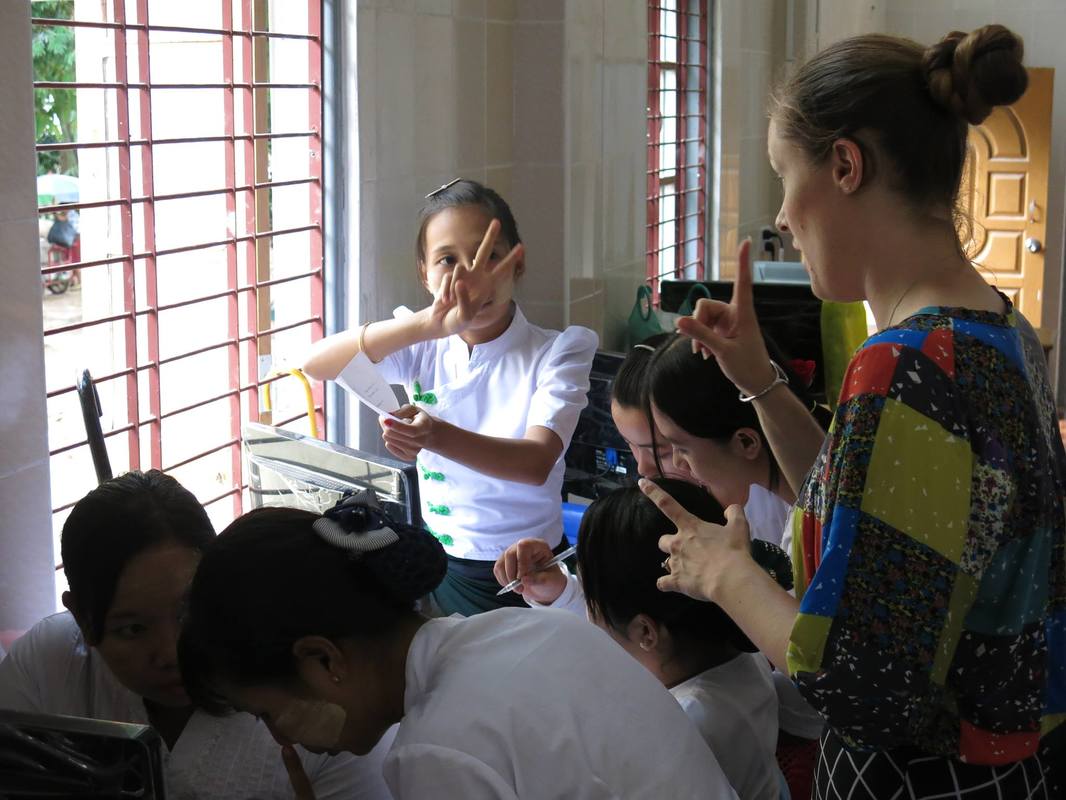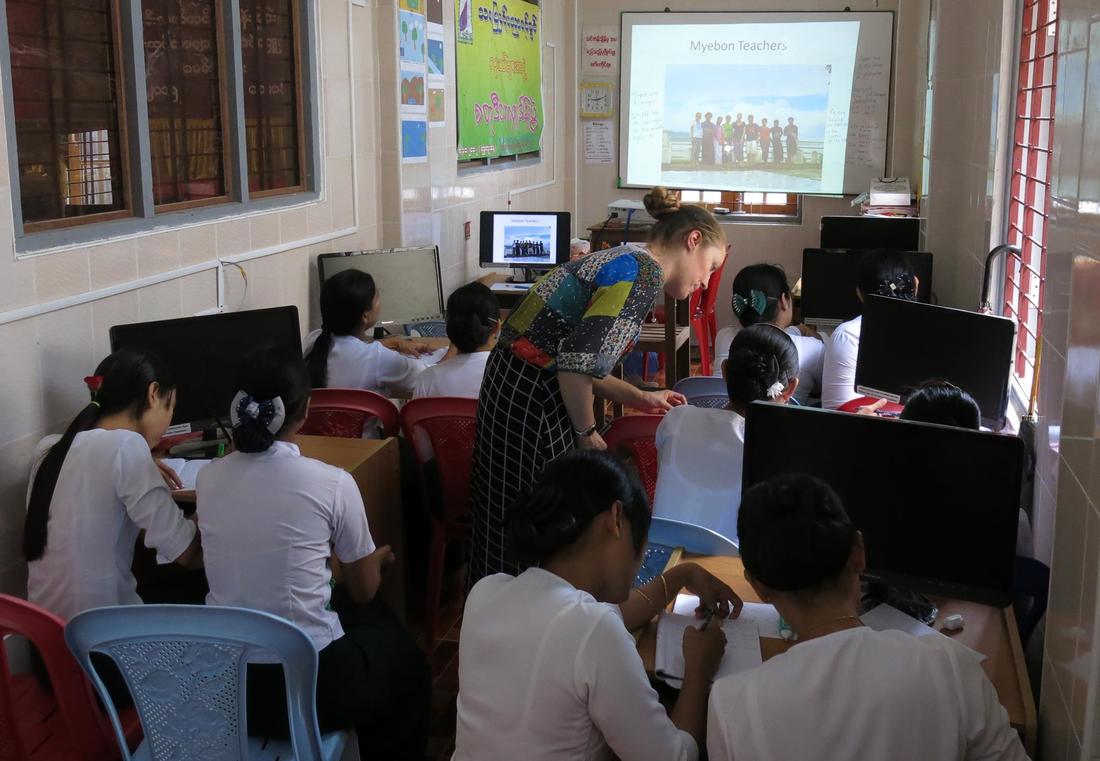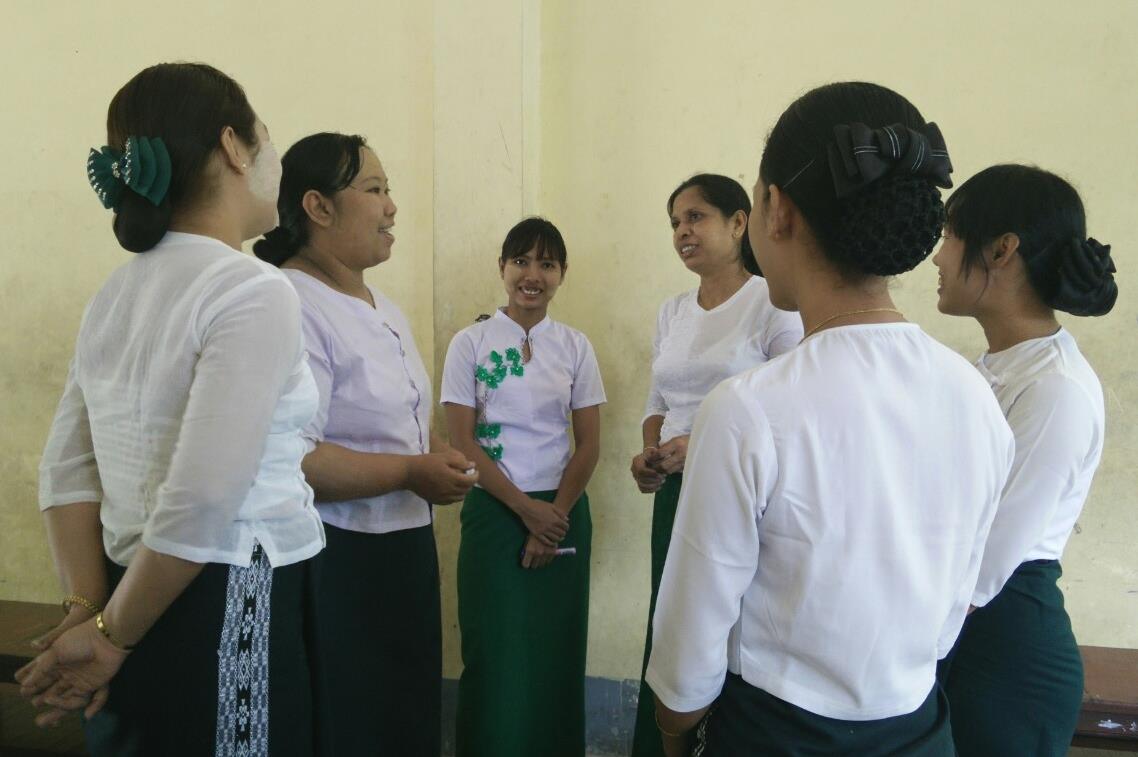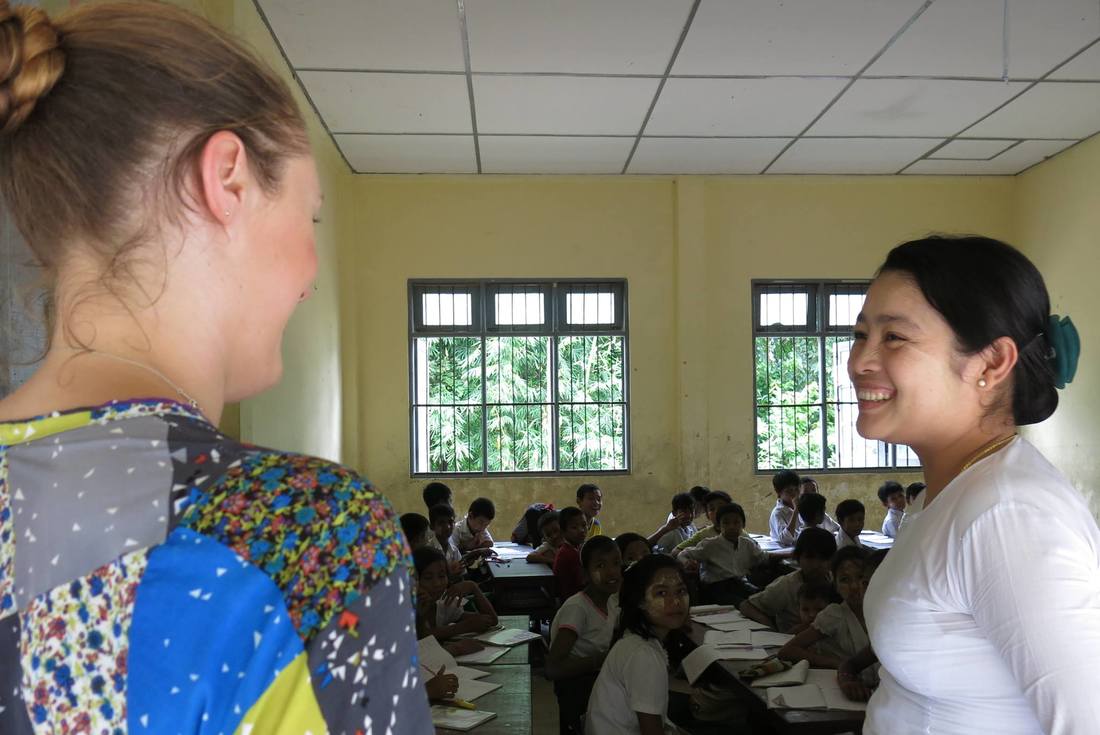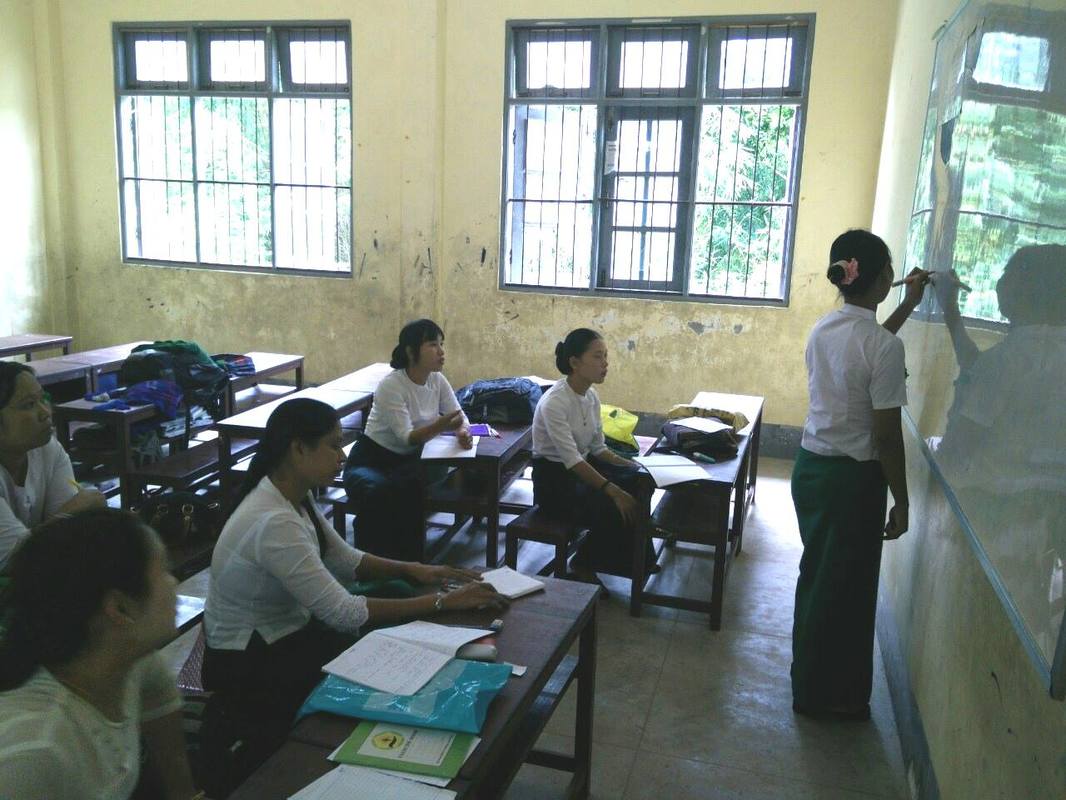|
I decided that I should incorporate training wherever possible by asking the teachers to think critically about how they could use or adapt the activities in their own classrooms. This critical thinking didn’t need to be done in English and therefore was more of an exercise in implementing active learning within the classroom than a test of knowledge. I covered a broad range of topics with my 11 pupils. The syllabus was broader than any typical speaking and listening course because there were things that I wanted to cover with regards to teacher training that needed that broader focus. Some of the topics that we covered were requests from the teachers themselves, such as used to. In ESL, there is a very well debated question of fluency or accuracy when teaching or learning a language. The current school of thought is that fluency trumps accuracy, provided the accuracy is such that a speaker is able to be understood. Therefore, it stands to reason that we should not jump on mistakes that our students make and by doing so, potentially cripple their willingness to participate in class. On the other hand, we do not wish for our learners to get fossilized errors embedded into their vocabulary. We do a lot of task-based learning based on real-life contexts. It is really important to be able to anchor the new language in a context. Most learners are familiar with such concepts as going to market or giving directions, they simply need the vocabulary in the target language. Therefore, it works well to set the classroom up as a town centre with all of the amenities that one might need: the bank, the pagoda, the church, the supermarket, and so on. Each student stands next to a building in town and then asks for directions to a new place. The beauty of this model is that the directions change depending on where you are standing in the room, and so the learners must use both their English language and their common sense as they guide each other around the classroom. I was pleased to learn that the teachers were familiar with the concepts of student-centered teaching and active learning from the beginning. The problem is implementing it in a 40 student classroom with limited resources. I hope that even if the total concept is unrealistic to achieve in such a setting, many of the components can be used to enhance the learning experience of Myanmar children.
Chloe Smith NEH Director of Studies and Teacher Trainer Related Posts: Comparing Teacher Trainings Guest Post | Technology Trials: Training Teachers in Myanmar Donors Visits School in Thanlyin Last Day of Class in Thanlyin Daily Bus Journeys to Work First Day of Class Myanmar National Races Village Visit Guest Response | Using Home Language in English Class
Comments
|
This section will not be visible in live published website. Below are your current settings: Current Number Of Columns are = 3 Expand Posts Area = 1 Gap/Space Between Posts = 20px Blog Post Style = card Use of custom card colors instead of default colors = Blog Post Card Background Color = current color Blog Post Card Shadow Color = current color Blog Post Card Border Color = current color Publish the website and visit your blog page to see the results |
|
© New Education Highway 2024
Except where otherwise noted, content on this site is licensed under a Creative Commons Attribution 4.0 International License. |

